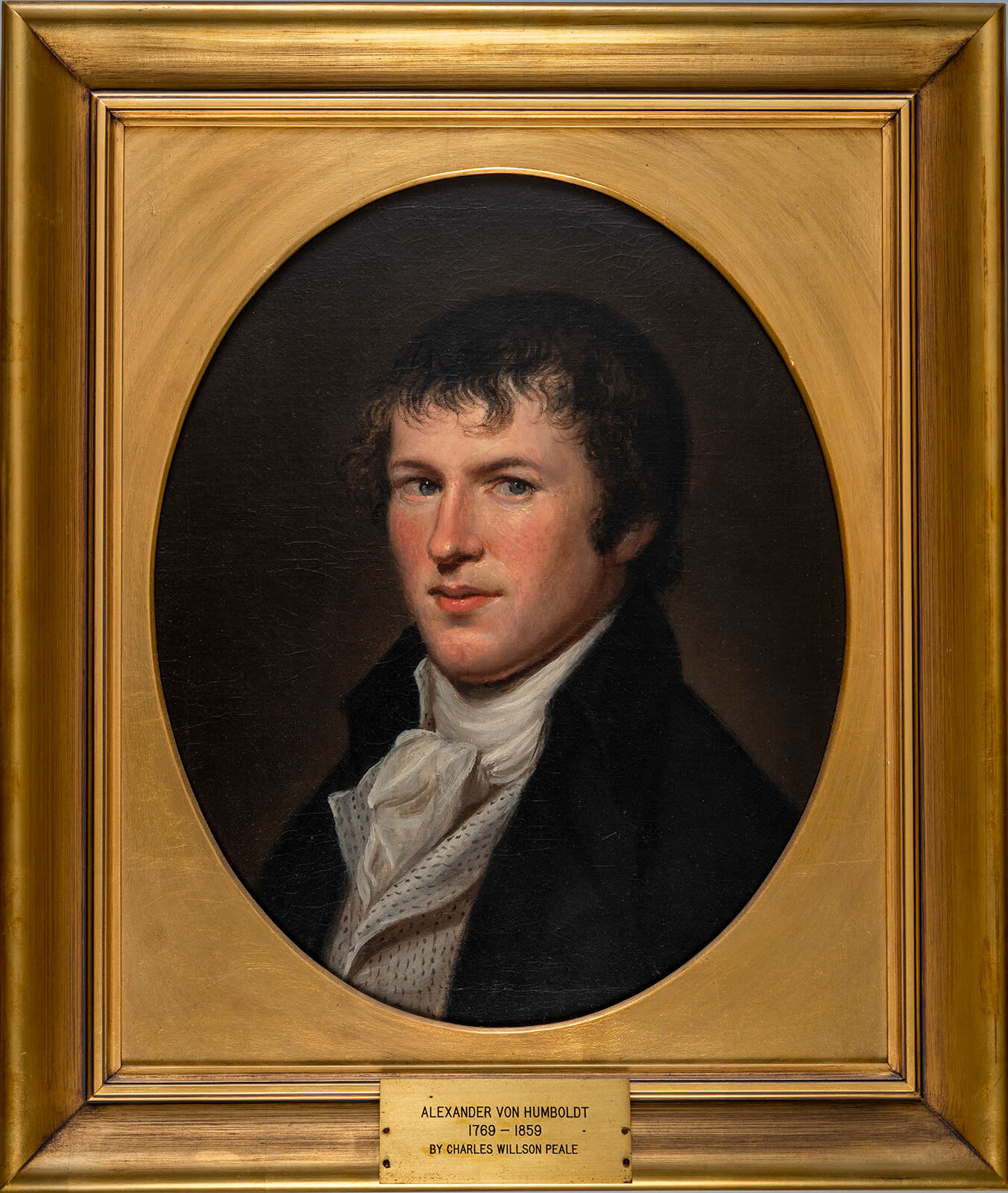
Alexander von Humboldt and the United States: Art, Nature and Culture is one of many museum exhibitions currently stuck in limbo. Originally scheduled to open on March 20, 2020, the show is all set up at the Smithsonian American Art Museum in Washington D.C., just waiting to admit visitors whenever the coronavirus shutdown ends. However, you can experience the show right now through a half-hour video tour narrated by curator Dr. Eleanor Jones Harvey. The video is wonderful. It’s one of the best virtual museum experiences I’ve found so far; it feels about as close to being in the museum building as I think you’re likely to get at this moment. And it doesn’t hurt that the exhibition itself is fascinating.
Its subject is Prussian naturalist and polymath Alexander von Humboldt (1769-1859), who is definitely the most important scientific figure most of us have never heard of. His extensive exploration, research, and published writing, combined with his then-groundbreaking ideas about the interconnectedness of nature, made him one of the most influential figures of his time. He spent six weeks in the United States in 1804, meeting with President Thomas Jefferson and other American luminaries. Humboldt and America had strong, mutual affection for each other, although Humboldt was frustrated by Jefferson’s refusal to outlaw slavery.
The Smithsonian exhibition tracks Humboldt’s visit and its cascading effects on American art, science, exploration, politics, abolitionism, activism, and more. The show includes paintings by many of my favorite American artists, as well as books, maps, photographs, illustrations, and a genuine mastodon skeleton that was excavated in New York in 1801. It’s the same one that famously appears in Charles Willson Peale’s painting The Artist in His Museum.
This exhibition deals heavily with a topic that fascinates me – the relationship between American landscape painting, the American wilderness, and American national identity in the 19th century. Because I wanted to find out more about how Humboldt fit into this tradition, I contacted Smithsonian American Art Museum senior curator Dr. Eleanor Jones Harvey. Dr. Harvey was kind enough to have a lengthy, delightful conversation with me about the exhibition, Humboldt’s legacy, and our mutual love of American landscape painting. Here are the highlights. For better context, I suggest watching the video tour before reading the interview.
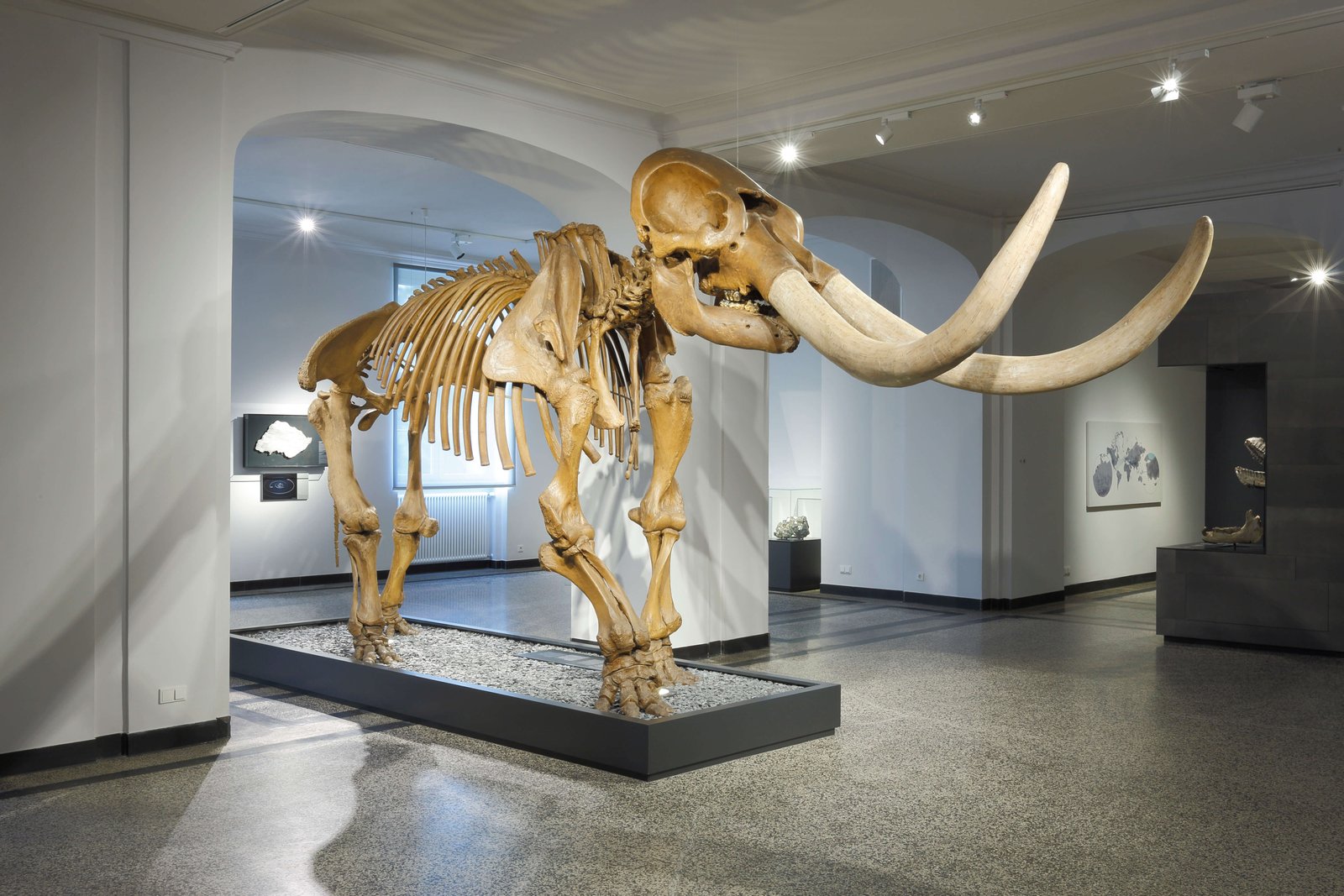
My Conversation with Dr. Eleanor Jones Harvey
Alexandra Kiely (AK): How did this project come about?
Dr. Eleanor Jones Harvey (EH): This is kind of a capstone exhibition for me. […] I started college as a geology major and got sidetracked by the math requirement. But I was also interested in art history and in making art from my childhood. And so landscape painting became a sneaky way of doing geology without the math. Of course, the first artist I fall for is Frederic Church, who was off talking to Alexander von Humboldt in the corner. And I thought, “wait a second, I thought I left you behind, and what are you doing here?” And I didn’t really do anything with that, but it was just nice to know that my landscape painters cared enough about the science to sweat the details.
So you fast forward, and I was working on my Civil War exhibition [The Civil War and American Art at the Smithsonian American Art Museum] in 2012, and I discover Humboldt is an abolitionist who was messing with the 1856 election, and that everything named for Humboldt was probably named by [abolitionist, politician, and explorer] John C. Fremont, and I thought well, you know, chalk that up to interesting trivia. And then when I realized he had come to the United States and had expressly wanted to meet Thomas Jefferson, being a graduate of the University of Virginia, I was kind of like “time out. What happens if you stop lurking in all of my projects, and I actually train the spotlight on you?” […] I want to see the impact that Humboldt left. If he’s friends with Jefferson and he’s influencing Frederic Church, and he’s messing with our politics, there’s got to be a story there. […]
What it turned into, aside from an exercise in name dropping and networking, was I began to realize that the timing of Humboldt’s visit coincides with the chip on our shoulder about not being able to keep up with Europe with architectural monuments, and centuries-old cathedrals, and schools and cities. And here is Humboldt, who comes along and basically says to Jefferson, “You’ve already outlined it in Notes on the State of Virginia [Jefferson’s 1785 book]. It’s about what’s already here, not what you build on this. It’s about your contributions to science. It’s about recognition of natural monuments. It’s like play to your strengths; don’t chase somebody else’s strengths.”
And I thought, first of all, that’s great advice for any of us, but second of all, it began to make me realize that we’re all pretty glib, and we’re right, to talk about a wilderness aesthetic starting in about the 1820s. [Thomas] Cole and then the Hudson River School were all about how do we understand democracy and American culture and patriotism without landscape painting sort of standing for our ambitions? Where the heck did that come from? No other country does that. Are we that brave, or were we that daring? And I think Humboldt’s imprimatur, tied to Jefferson’s Presidency, speeds us down a path we were kind of tentatively stepping down in the first place, and gave it essentially a European Good Housekeeping Seal of Approval. […]
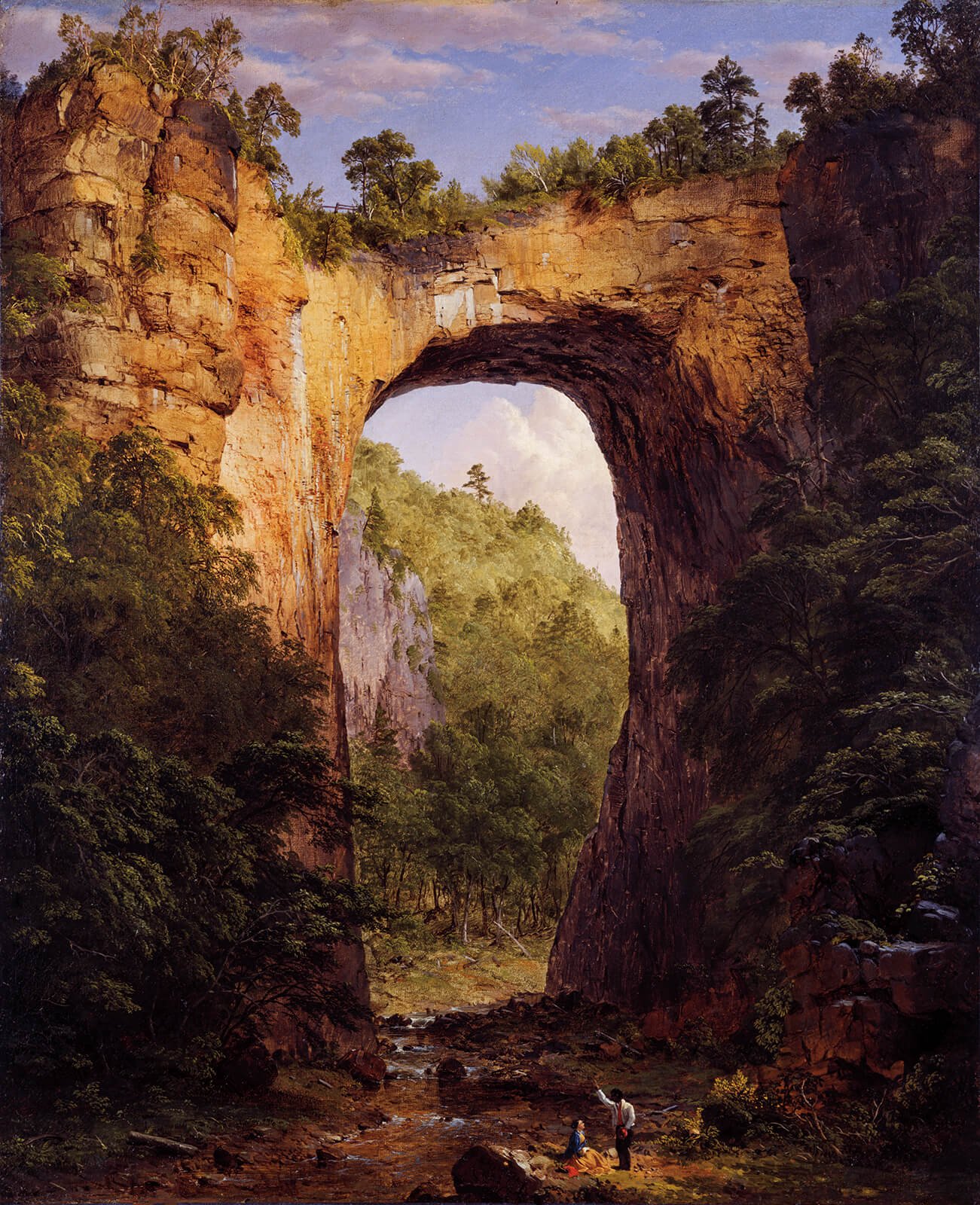
AK: I find that really interesting, because everything you were talking about, with the relationship between the American wilderness and American identity – that’s what I’m so fascinated by. That’s what draws me to American landscape painting, and American art in general. I find that really, really fascinating. […] It’s something that I love and was honestly, to me, the way I got interested in American art. […] And so I guess, Humboldt played a huge part in that, and we just didn’t really know?
EH: We kind of lost sight of him. I think Louis Agassiz actually nailed it in his 1869 Centennial Address [for the Centennial Exposition in Philadelphia]. One of the points that he makes is “every school child in America has been taught by Humboldt; he just doesn’t know the name of his teacher.” And to me, what that says is that by the time we’re all absorbing this, it just seems like common sense. We aren’t looking for a point of origin. […] You absorb it. It makes sense. You start formulating your own ideas. You take off with your own ideas, and you forget where you started. […] Humboldt suffers from the fact that a lot of his key thoughts and ideas became so ubiquitous that you just kind of zone out on where you first heard it, because you’re hearing it everywhere. And I think that, ironically, that Humboldt’s legacy is that we’re having to attach him back to those ideas. […]
AK: So he was a victim of his own success a little bit?
EH: A little bit, but I think also he was one of those restless thinkers who didn’t sleep much, never stopped talking, and I expect he spun out a lot of ideas and then people picked up and ran with them. It’s kind of like the ultimate baton relay, where he’s handing out batons right and left, going “what about this, and what about that, and what about the other thing?”[…] So it literally is like a Wikipedia-athon. His career really is like that kind of crowdsourcing. And so he wasn’t a particularly territorial person. And I think he took a great deal of pleasure in being quoted as an expert in everything.
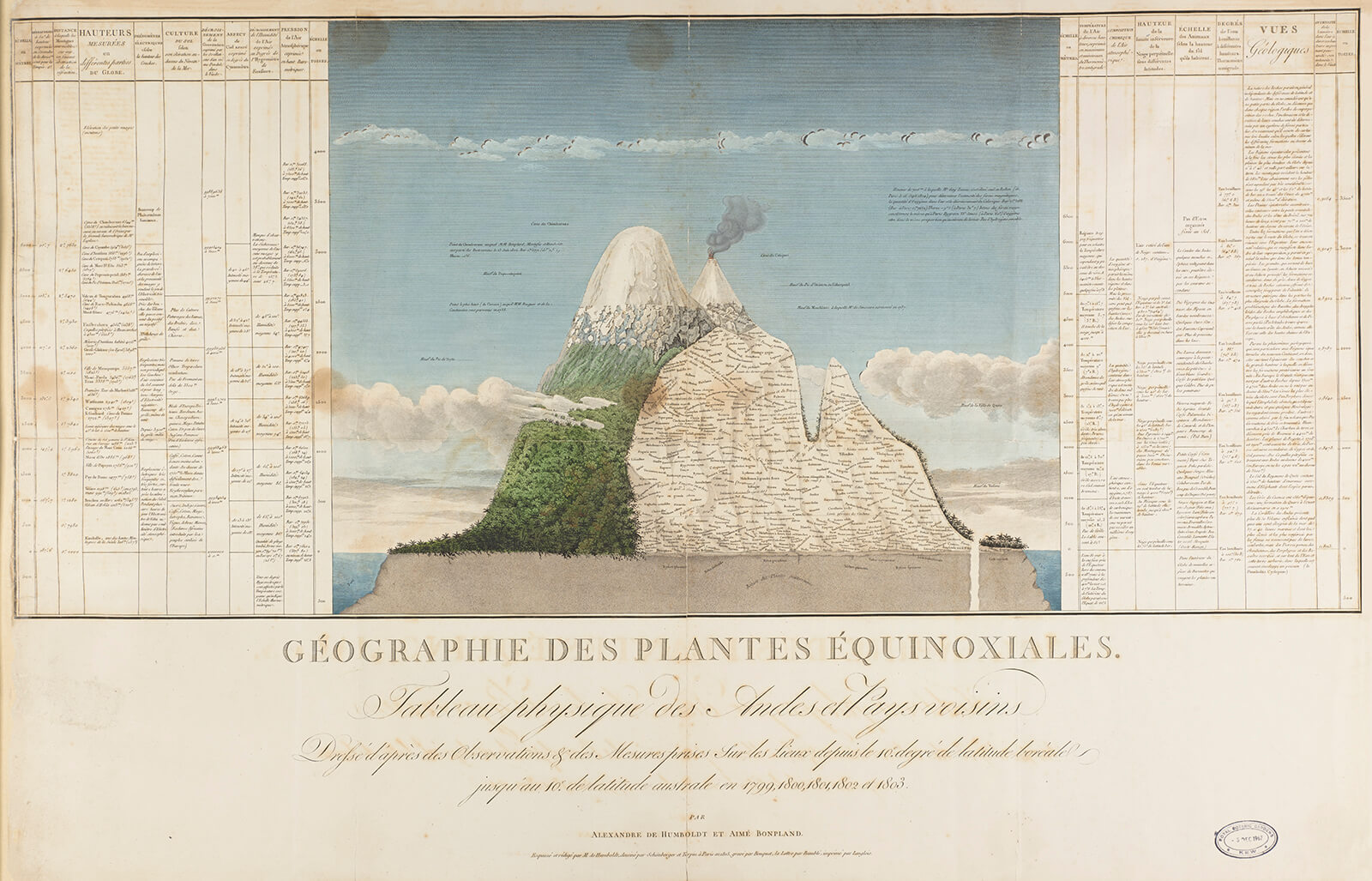
AK: I’m sorry if this seems like a bit of a naïve question, but my knowledge of the history of science is not particularly strong. What was so revolutionary about Humboldt compared to naturalists that came before him?
EH: What Humboldt suggested was everything on the planet is interconnected. It’s like it’s one gigantic, multi-tiered ecosystem. And that if you understood the impact of one force on another, you could understand geology, meteorology, botany, the transmission of species. You begin to understand plate tectonics. You begin to understand the Gulf Stream. And there were people – [George] Forster when he came back from Captain Cook’s second voyage said “You know I see plants around the world that remind me of things I’ve seen in Europe. I wonder if they’re connected.” Humboldt grabbed that idea and basically said “oh oh I bet you I can prove that”.
And so he is looking at the same altitude in the Alps, and in the Atlas mountains, and in the Andes, and he’s postulating what he would find in the Rockies, and he’s like “well, if the rhododendrons grow here, but then they give out and are replaced by conifers, and they give out and then you get mosses, and then you get bare rock, I’ll bet you that happens everywhere. I’ll bet you there’s a pattern.” So what he’s looking for is enough data to establish patterns to be able to make statements like “you have zones from the Amazon River basin all the way up to the land of perpetual snow at the summit of the mountains”.
And then he went a step further and said, “I can go 20,000 feet up Chimborazo and go from the tropics to the Arctic essentially. I wonder if that’s the same as going from the Equator to the North Pole.” Well, as it turns out, yeah, if you extend the axis, it is exactly the same thing. […]Instead of just understanding something locally, he took local and expanded it to continental to hemispheric to global. […] It’s that notion of the unity of nature. It’s the notion that everything is connected, that it all makes sense if you have enough information. We think of that as being just obvious. The first thing you’re taught in your first biology class. And he’s the guy who essentially took all of the mulling and the little ideas and knitted them together into one big idea. […] He’s like the ultimate advisor – the ultimate mentor. And it’s the next generation that ends up being the founders of those individual scientific disciplines that make up college course curriculums and all of that.
AK: Kind of cool how he was all about making connections, and now, you’re finding all the connections to him. That’s a really nice parallel.
EH: Yeah, well. I would love to be Humboldt when I grow up, but I’m seven languages behind, I sleep way too much, and there’s just no way. But, I love the restless curiosity. I love that he never seemed to get bored. There was always something new to ask about. […] With this exhibition, it really did start out with what happens when I make you the centerpiece, and it morphed into how many American artists were really obsessed with this guy, and how does it come through it their art? And then it really flipped into how does our whole notion of cultural identity grounded in nature receive the kind of enthusiastic support from this guy, who has enough clout at a key moment in our history to make us want to listen to him? […] I think it was that notion that we had cheerleading for us in Europe we had one of the single most popular and important people in the world, period, on our side.
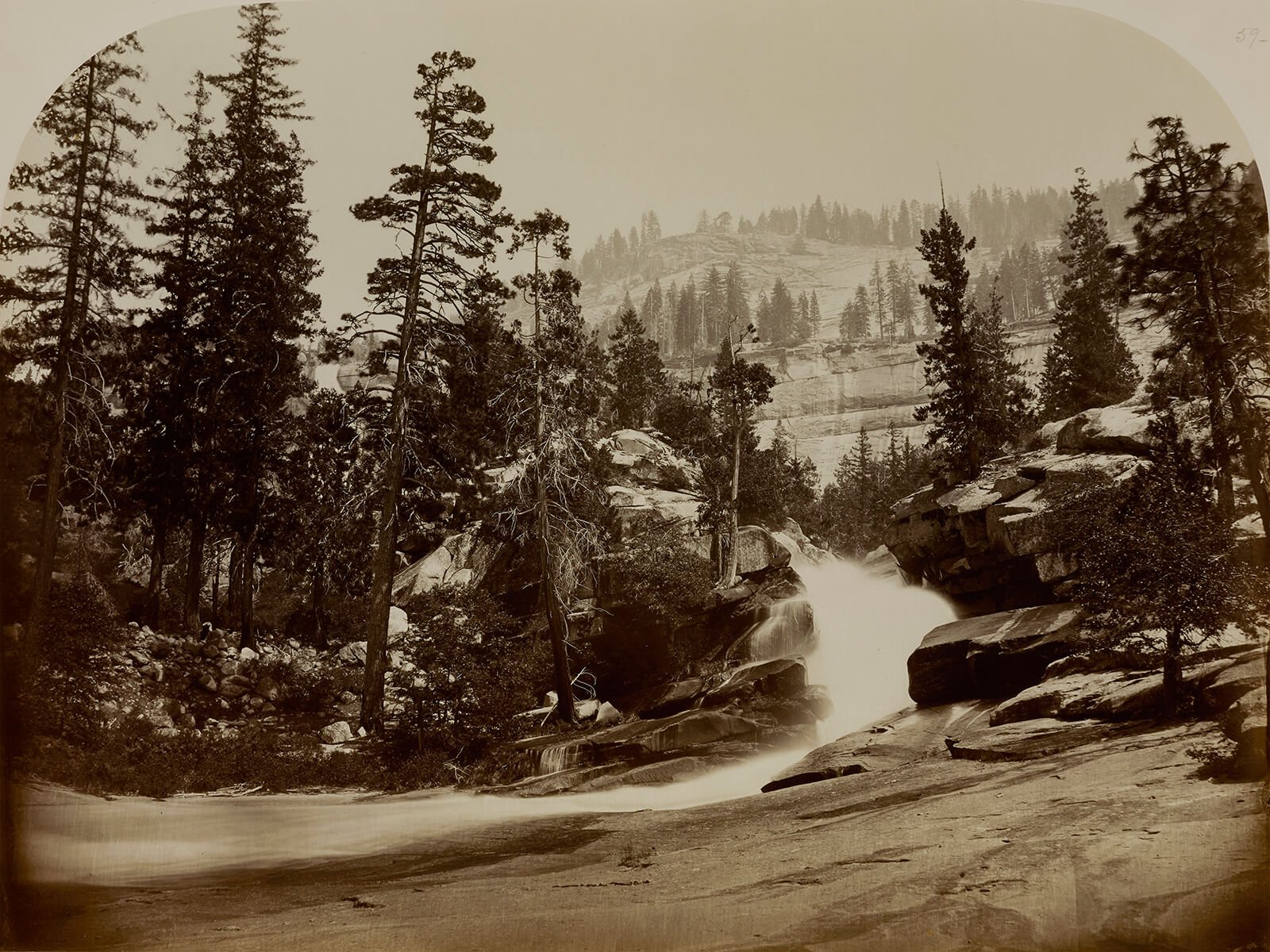
AK: So typically, when we think about the start of the American landscape painting tradition, we tend to start everything with Thomas Cole. That’s how I always learned it. It starts with Thomas Cole. He’s the big force, and then, it goes from there. […] So how does Cole fit into all of this with Humboldt?
EH: It’s an outstanding question, because I was really uncomfortable about the fact that I could not fit Cole into this, and I kept thinking “why not?” […] I think that Cole could have easily been raised on Humboldt’s early writings – on Views of the Cordilleras, on The Essay on the Geography of Plants, early part of A Personal Narrative. But I also think that Cole is very much such a student of human history, of architecture, and of the history of religion, that I’m not sure Humboldt is the answer for him. Humboldt’s effectively an atheist. He never mentions a higher power or a creator. It’s all about spirit and synergy, and nature. […] And so I think temperamentally, he’s not Cole’s primary source. But interestingly enough, when Cole gets started, are illustrations – well, not illustrations – they are riffs on James Fenimore Cooper’s Last of the Mohicans, The Leatherstocking Tales, and those owe their soul to Humboldt. So, I consider Cole sort of Humboldtian by proxy. I didn’t end up including him in the show because it was going to be too hard to explain. […]
Cole’s gift to us, to be truthful, in my view, what makes Thomas Cole worthy of the originator of the American landscape tradition is he’s not a military topographer, he’s not doing this in the service of exploration, he’s doing it as an inversion of a hierarchy of genres we were given by the Royal Academy. It was always history painting, religion, and then you drop down a couple of levels, and you get to portraiture and still life, and then at the very bottom, you get landscapes. Because anybody can paint a view, apparently. What Cole does is he turns that pyramid upside down. And the way he does it is he paints literary landscapes, he paints origin stories for us. He is painting our creation myths and becomes fundamentally a creation myth himself. It’s like landscape, you know, Adam and Eve, it starts with Thomas Cole. And so to me, it’s more of a literary approach to landscape foremost. […]
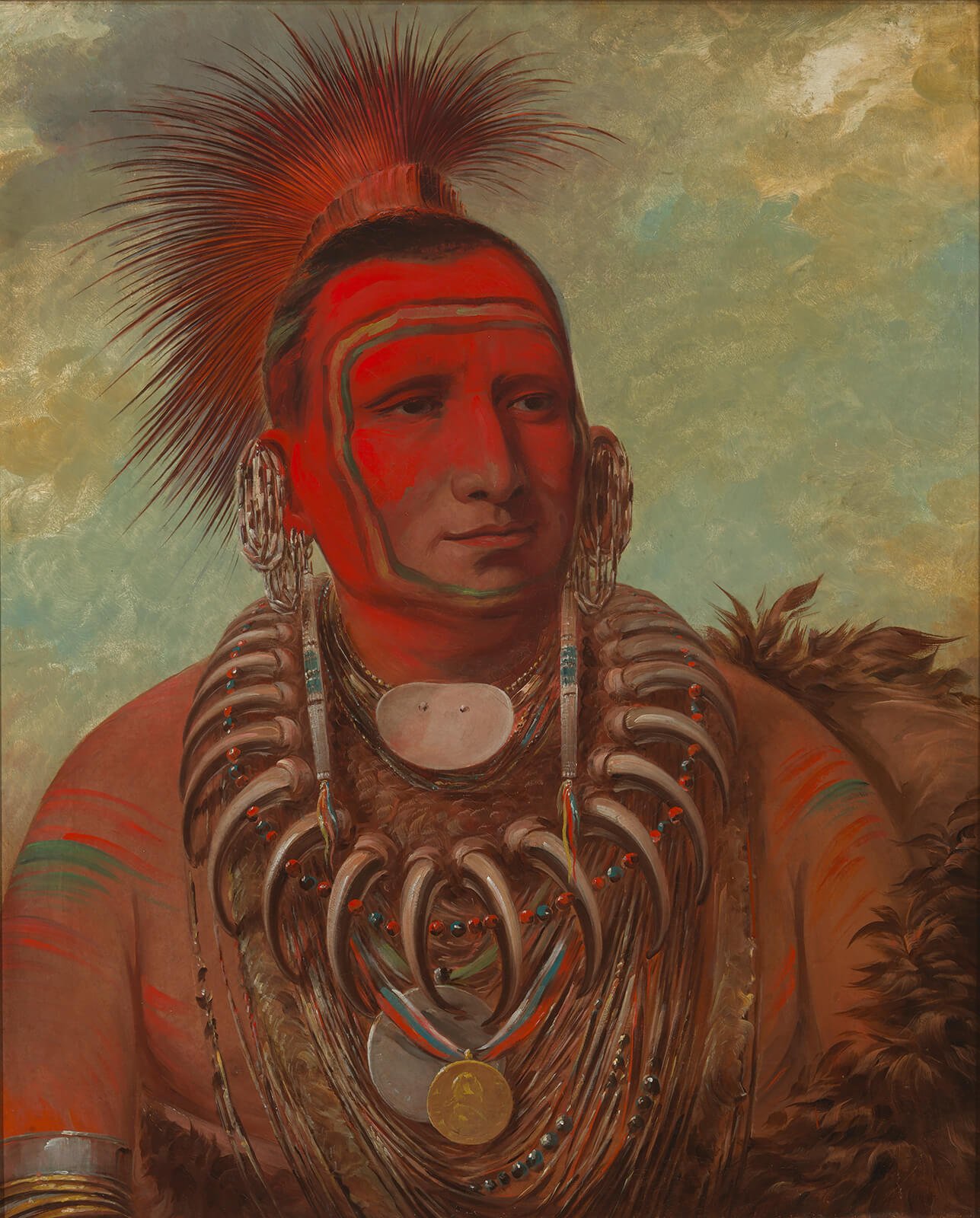
AK: I said that I was surprised to not hear about Thomas Cole, and then somebody that I was surprised that they had a relationship to this was George Catlin. That, I didn’t expect. It’s kind of cool.
EH: Yeah, that’s a crazy one. We’re at [Smithsonian] American Art [Museum], we are sitting on the largest collection of George Catlin’s work. He is not an artist I have ever spent a great deal of time thinking about. And when I realized he [Humboldt] had met Catlin in Paris […] What was unexpected and kind of inexplicable is why they would have become friends. I mean, Catlin is the ultimate amateur. Not a formally trained artist. He is not an ethnographer. He bleeds for his subjects, but he doesn’t think he can actually rescue them. What he wants to do is raise political opposition to Andrew Jackson’s Indian Removal Policy. Which Humboldt would have approved of. That would have been “oh yeah, you need to get rid of this. That’s an awful way to treat your indigenous people.” But there must have been something about their personalities that just clicked.
[…] There were troops of American Indians who were in Europe intermittently during this period seeking redress for grievances dating back to the French and Indian Wars. So, some of the Indians who were in London – none of them came there because Catlin brought them – but Catlin signed a deal with [circus owner P. T.] Barnum that if he brought the Iowa Indians over, he would love to have them dance for him in order to raise ticket revenues in England. And so they do that. And then the Indians, who had met Catlin in the 1830s are kind of like “oh yeah, we remember you”, and so they’re like “well, let’s go to Paris”. And they’re all like “Yeah! Let’s go to Paris”, so they go to Paris. They dance for the French king at the Tuileries. Victor Hugo, George Sand, and Eugene Delacroix are there. And so’s Humboldt. […] So, I mean, it’s crazy. So it makes sense that Humboldt would be there.
Well then, of course, the director of the Louvre invites Catlin to set up in one of their rooms, and so as they’re setting up the Indian Gallery, the Louvre director offers them a private tour. They invite Humboldt, so Humboldt, Catlin, and the Iowa Indians are touring the Louvre together. […] These are the first and only American Indians that Humboldt gets to meet in North America. But that still doesn’t really explain the friendship for the next fifteen years. […]
It took me a while to realize in looking at Catlin’s published account of all of those years in Europe, where he relates all of those stories about Humboldt, to realize that in the frontispiece, most people think that’s Catlin reaching out and shaking hands with an Iowa Indian. It’s Humboldt. And I stared at it and went “Oh my God, that’s Humboldt!” He is literally using him as like the Good Housekeeping Seal of Approval, and then he embosses it in gold leaf on the cover of the catalog. I think that what Catlin is doing is basically saying “you guys think that I’m a charlatan. You think that I’m a showman. You think that I’ve sold out. Well this guy that you revere so much likes me. So there.”
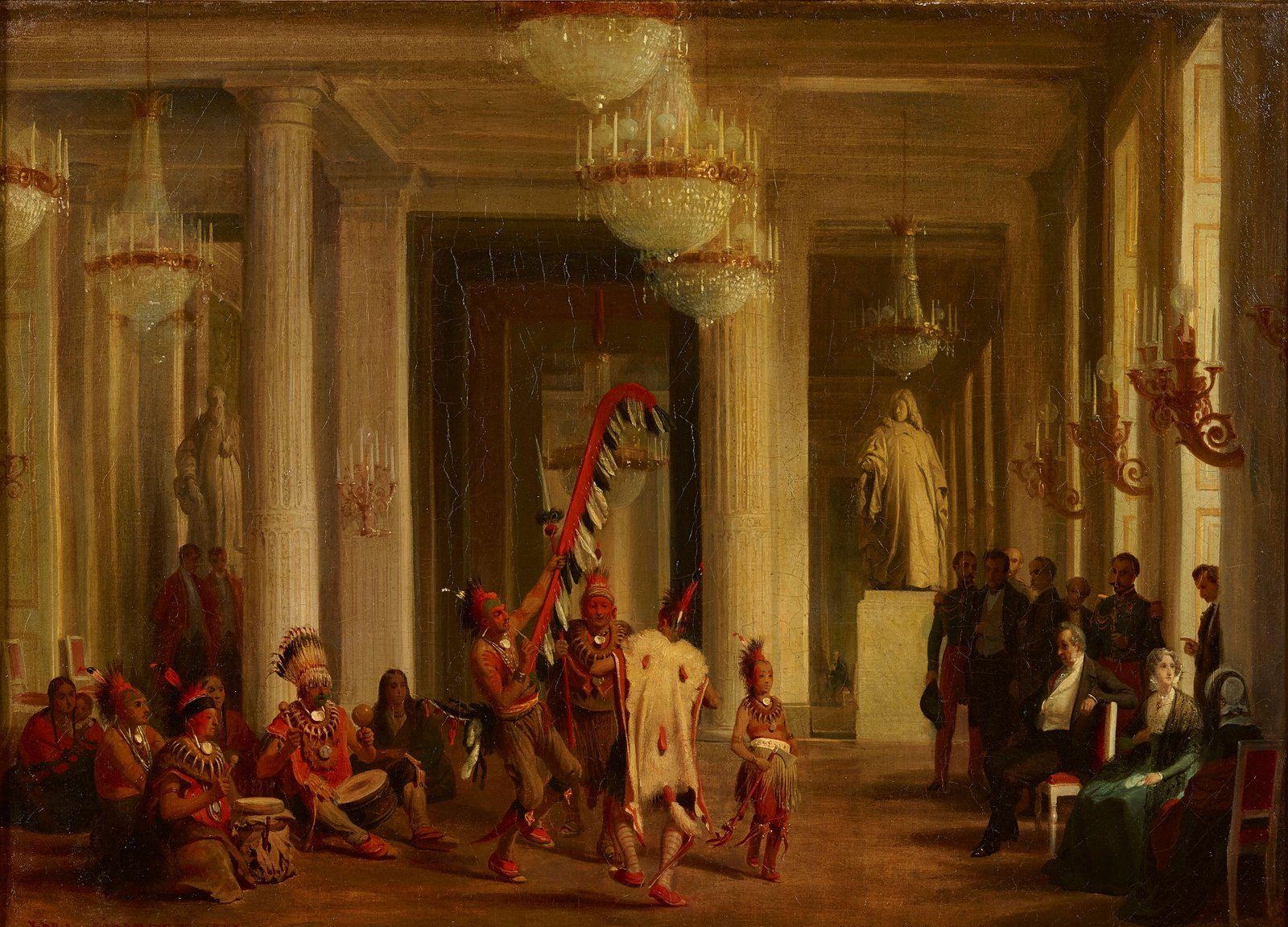
AK: I like that.
EH: There’s a certain amount of rehabilitating his reputation, and he’s using Humboldt to do it. Which would seem like it’s kind of in keeping with Catlin’s character. […] So, it is potentially the relationship I don’t understand, but I will say this about Humboldt: he possesses the quality that we are distinctly lacking at this particular moment, which is he never throws out the baby with the bathwater. […] He can tease out the value that’s there and just set aside the rest.
It’s like Jefferson and slavery. “I love you. I love your country. Slavery is evil. If I don’t have any traction with you on that, I’m not going to throw out the baby with the bathwater. I’m not going to turn my back on you. I’m just going to keep trying.” He does the same thing with [Louis] Agassiz. I suspect the same thing may be true of someone like Catlin. He gets the fact that there are problems, but he also admires the project that Catlin undertook, the data of 600 paintings of American Indians, all of the detail in their clothing and their life-ways. So he admires the ambition even if he doesn’t necessarily always admire the packaging. And I think again, you know, if you’re developing a collaborative model of scholarship, and the only people you’re willing to collaborate with are the people you like, you’re going to skew your data. And so he kind of figured out a way how to stay in good rapport with all kinds of people, including the ones he didn’t particularly care for. […]
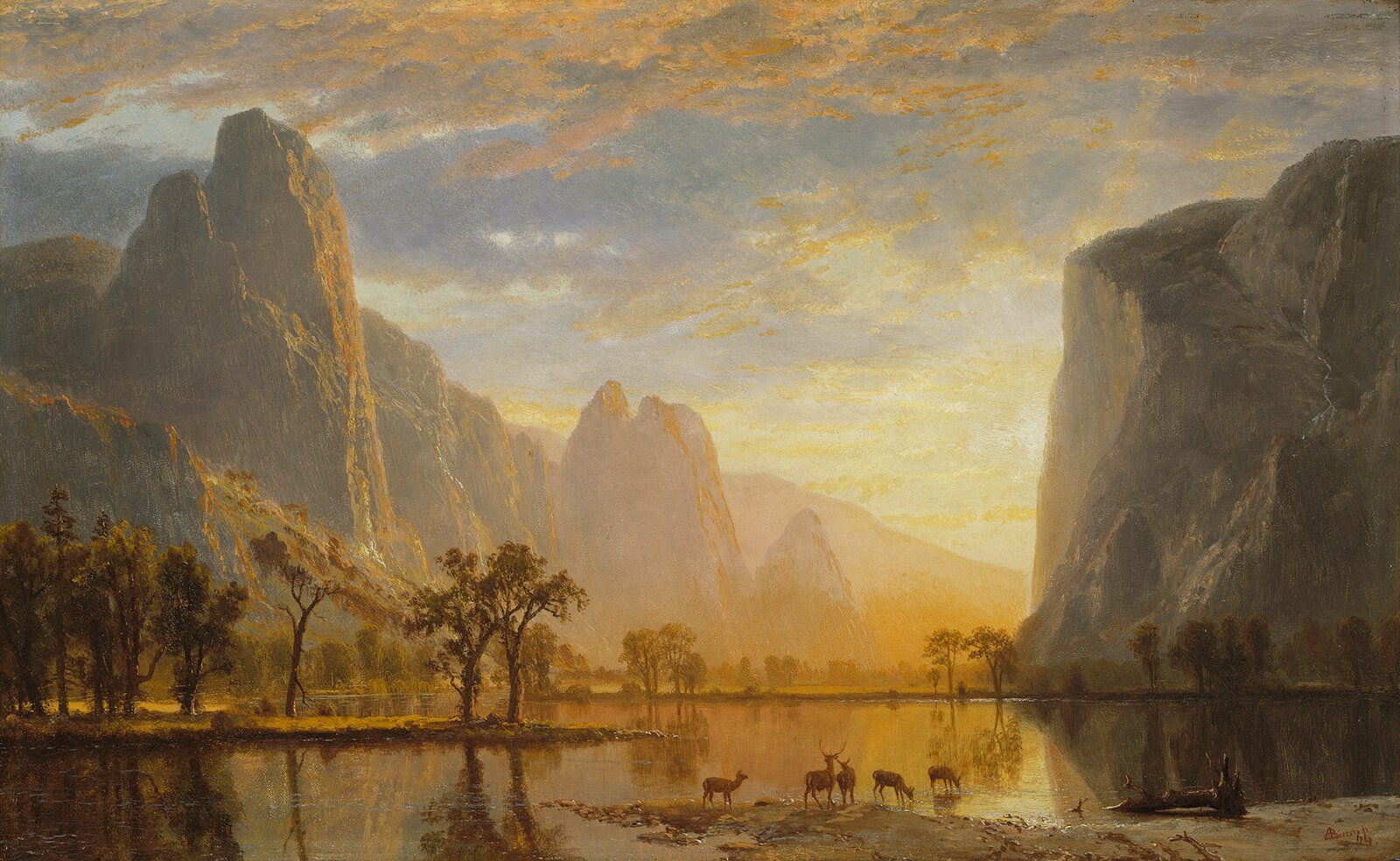
EH: You know, [Albert] Bierstadt’s another one who should be a Humboldt devote. Shared German heritage. I can’t make a case for it. It doesn’t seem to be the idiom in which Bierstadt is painting, and I think that’s the other takeaway from Humboldt, which is Humboldt may be ubiquitous, but it doesn’t mean everyone is equally smitten.
AK: I’m glad you mentioned that, because I was actually going to ask you about Bierstadt and Thomas Moran. I guess by the time they were making those iconic paintings out west, Humboldt was just everywhere. But no one was specifically…?
EH: Yeah. What you’re dealing with then is literally what’s in the water and what’s in the air. All four of the great western surveys were run by guys who adored Humboldt, so it’s already baked into everything Moran is going to be doing. And with Bierstadt, I think that again, he’s pitching to royalty. His primary patronage base is the Earl of Dunraven, it’s Queen Victoria’s court, it’s the German nobility, it’s the Russian nobility. He’s going for the robber barons and the railroad magnates and the heavy hitters. He’s got his eye on the Gilded Age fortunes. It really, I think, is coming out of the ethos of the Dusseldorf School, not really as much out of the Hudson River School. And that’s just not Humboldt’s arena. You can have more than one paradigm, and it’s not Humboldt, Humboldt, Humbodlt, Humboldt, Humboldt. It’s Humboldt, and then there are all these tentacles and other intersecting influences.
Thank you so much, Dr. Harvey, for taking the time to have this lovely conversation with me!
Alexander von Humboldt and the United States: Art, Nature, and Culture was originally scheduled to run at the Smithsonian American Art Museum in Washington D.C. from March 20 – August 16, 2020. Let’s hope that it has the chance to actually open soon. Fortunately, you can enjoy the exhibition tour video and related content at any time on the museum’s website.
Addendum 8/28/20: I’ve just finished reading The Invention of Nature: Alexander von Humboldt’s New World, Andrea Wulf’s biography of Humboldt (New York: Alfred A. Knopf, 2015). I thought I understood Humboldt’s impact before, but I realize now that I actually had no idea of his full importance until reading this book. I highly recommend it if you’re at all interested in Humboldt and the topics covered by this post.
I definitely didn’t know before how Humboldt valued the emotional aspects of nature as much as he did the scientific ones. I know from my own personal experience how difficult it can be to balance both art and facts, so I really like his attitude on the subject and will try to adopt it for myself.


